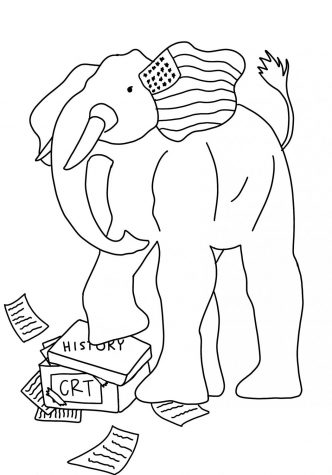A couple of months ago, my Advanced Placement (AP) United States (U.S.) History class was introduced to Andrew Jackson, the seventh president of the U.S. In my textbook, he was known as the epitome of the Common Man, one of the first presidents to be elected by the average white American. Left out of the book was an emphasis on Jackson’s lesser known and more controversial policies, such as his push for slavery and the Trail of Tears. But these were not overlooked in our class discussion: my teacher spent time looking into all of Jackson’s legacies and gave the class a chance to consider how they play into America today.
This is history. Yet, in some states, this lesson could be illegal under new laws prohibiting critical race theory (CRT).
The phrase critical race theory was first coined by American law professors in the 1970s and is a lens used to examine whether institutions and laws have racial bias. However, new coverage and defamations of the phrase advocate CRT is being taught in schools as a way to indoctrinate students with leftist and anti-white ideas, resulting in new legislation that is general enough to forbid teaching all aspects of race in some states. Critical race theory is being misrepresented in politics and the media, empowering legislation that is stopping educators from teaching holistic and crucial lessons on race.
The recent spike of debate around CRT spurs from conservative activist Christopher Rufo, who, in a three minute segment on Fox News last September, brought CRT into the limelight by calling it a “destructive, divisive, pseudoscientific ideology.”

Rufo reinvigorated the phrase to become a new liberal doctrine for conservatives to strike, taking down the education system along with it.
“Critical race theory is the perfect villain,” Rufo said later to the New Yorker, describing how the term became a political weapon for the conservative agenda. “Strung together, the phrase ‘critical race theory’ connotes hostile, academic, divisive, race-obsessed, poisonous, elitist and anti-American [beliefs].”
Rufo has published more than two dozen articles on the topic, and he is cited in over ten pieces of legislation against CRT. Prompted by Rufo’s repainting of the term, public outcry has emerged advocating that white elementary students are learning CRT and self-demoralizing values because of their race. Now, almost half of the states in the U.S. have anti-CRT bills rising through their legislatures, with eight states passing laws already. For instance, most recently, North Dakota’s Bill No. 1508 bans the actual term critical race theory, barring any teachings “that racism is systemically embedded in American society”. The law is remarkably general enough to potentially limit conversations about bias, privilege, discrimination and oppression. On the other hand, rising Texas Senate Bill 3 seeks to remove Native American history, writings from Martin Luther King Jr. and a requirement to teach the history of white supremacy, thus preventing discussions on actual history.
Randi Weingarten, the head of the American Federation of Teachers (AFT), one of the largest teacher’s unions in the country, illustrated the harm this legislation has done to the classroom.
“[Many] are labeling any discussion of race, racism or discrimination as CRT to try to make it toxic. They are bullying teachers and trying to stop us from teaching students accurate history,” Weingarten said.
As Weingarten implies, CRT is not required or even mentioned in the majority of schools across the country. According to an Association of American Educators study, 96 percent of approximately 1,000 teachers surveyed from 900 public schools were not required to teach CRT in classrooms. Now, this stream of anti-CRT legislation is narrowing the lessons teachers can employ to explore race, while also protecting some educators who do not want to teach about race at all.
Actual examinations of race within the classroom do not reflect what politicians and the media are depicting. Education about race in schools is often taught using events in history, usually by authors of color or through how race impacts one’s identity. None of these lenses aim to make kids feel guilty about their skin color, but instead expose students to multiple viewpoints on race rather than the homogeneous white outlook often promoted in older curriculums.
Lessons on different racial perspectives beyond a white angle and open environments to discuss race have boosted engagement and attendance among students. The San Francisco United School District developed an ethnic studies course focusing on various social justice movements and examples of racial discrimination in the U.S., while also highlighting students’ own identities and the impact of race on their lives. According to Chalkbeat, a platform that reports on American education, the class “increased participating ninth grade students’ attendance, course completion rates and grades”. These topics would likely be banned in other states under anti-CRT legislation, though it is impossible to be certain due to the ambiguity of these laws.
Governments across the U.S. should look into California’s approach, where the state has applied elements from the Oakland and San Francisco courses to the entire state, passing a new law requiring schools to adopt a mandatory ethnic studies course by the graduating class of 2030.
Race in education has become falsified by the media and politicians, forcing many schools to erase and halt crucial curriculum, like a full examination of Andrew Jackson. Instead, by fostering environments like ethnic studies, where students can construct their own beliefs around race, we are crafting places where race can become a point of unity instead of division.







